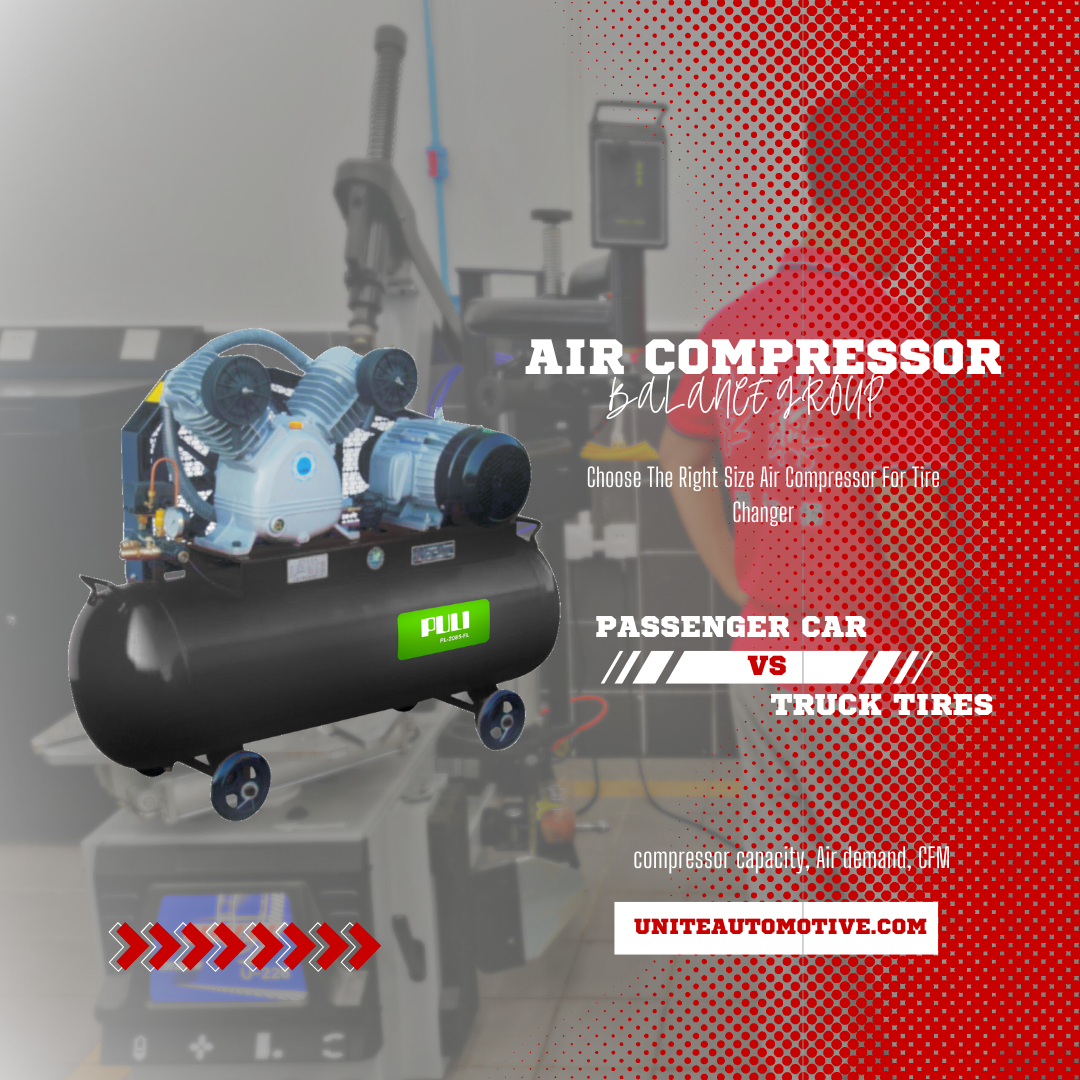Choosing the right size air compressor is the best way to ensure efficient operations. This article provides a simple and easy-to-understand guide for determining the appropriate compressor size based on your needs and requirements.
Also, we will try to understand some factors such as compressor capacity, Air demand, and CFM.
What size air compressor is needed for changing tires?
Passenger car
The size of the air compressor required for changing tires depends on the specific tire sizes and the tools used. Generally, a small portable air compressor with a capacity of 2 to 5 gallons and a minimum CFM (Cubic Feet per Minute) rating of 2 to 3 CFM should be sufficient for most passenger car tires.
Truck tires
Filling truck tires requires a more powerful air compressor due to the larger size and higher pressure requirements. For truck tires, it is recommended to use a larger air compressor with a higher CFM rating. Generally, a compressor with a capacity of at least 20 to 30 gallons and a CFM rating of 5 to 7 CFM is suitable for most truck tires.
However, for heavy-duty trucks or off-road vehicles with larger tires, a compressor with an even higher CFM rating may be necessary. Always refer to the manufacturer’s guidelines and specifications to ensure you choose an appropriate air compressor for filling truck tires.
The larger or high-pressure tire changer may require a larger compressor with a higher CFM rating. You must check the manufacturer’s recommendations for the specific tools and tire sizes you will be working with.
Factors consideration for choosing the right size air compressor
Understanding output (CFM)
CFM, or Cubic Feet per Minute, is a measure of the airflow delivered by the compressor. Understand the relationship between CFM and compressor capacity to ensure it meets your application requirements.
Understanding compressor capacity
Compressor capacity refers to the amount of compressed air produced. It is measured in units like CFM (Cubic Feet per Minute). To determine the required compressor capacity, consider factors such as close air demand, duty cycle, and future growth plans.
Considering duty cycle
The duty cycle refers to the time the compressor operates in a given period. Evaluate your compressor usage patterns and calculate the duty cycle percentage to find an appropriate compressor size.
Understanding vessel size
A vessel, also known as a tank, plays a role in maintaining consistent compressed air flow. Consider the appropriate vessel size based on your application to ensure optimal compressor performance.
Assessing compressed air demand
Estimate your compressed air usage by identifying the equipment and calculating the total air consumption. Differentiate between peak demand and average demand, and consider if your usage is intermittent or continuous.
Accounting for future growth
Account for potential expansion plans and changes in air demand. Choosing a compressor with a safety margin is advisable to effectively accommodate future growth.
Selecting the right compressor size
Match the compressor capacity with your demand, referring to manufacturer specifications and guidelines. Consider CFM requirements and vessel size to make an informed decision. If unsure, seek professional advice.
Additional considerations
Account for power supply requirements
Environmental factors
- Temperature
- Humidity
- Noise levels
- Maintenance operational costs.
Specific considerations apply to mobile tire-fitting compressors.
Conclusion
The right size compressor is vital for optimal performance and efficiency. You can make an informed decision by considering factors like compressor capacity, compressed air demand, duty cycle, and future growth. Don’t hesitate to seek expert advice when needed to ensure you select the best compressor size for your needs.

